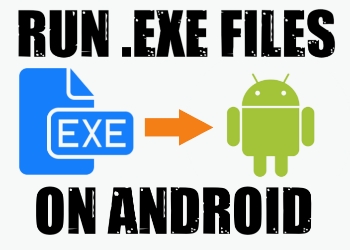.exe is a common filename extensiondenoting an executable file (the main execution point of a computer program) for Microsoft Windows.
File formats
DOSEdit
- 16-bit DOS MZ executable
- The original DOS executable file format. These formats can be identified by the letters “MZ” at the beginning of the file in ASCII. All later formats have an MZ DOS stub header.
- 16-bit New Executable
- Introduced with the multitasking MS-DOS 4.0 and also used by 16-bit OS/2 and Windows, NE can be identified by the “NE” in ASCII.
OS/2Edit
- 32-bit Linear Executable
- Introduced with OS/2 2.0, these can be identified by the “LX” in ASCII. These can only be run by OS/2 2.0 and higher. They are also used by some DOS extenders.
- Mixed 16/32-bit Linear Executable
- Introduced with OS/2 2.0, these can be identified by the “LE” in ASCII. This format is used for VxD drivers under Windows 3.x, OS/2, and Windows 9x; it is also used by some DOS extenders.
Windows
When a 16-bit or 32-bit Windows executable is run by Windows, execution starts at either the NE or the PE, and ignores the MZ code known as DOS stub. Started in DOS the stub typically displays a message “This program cannot be run in DOS mode” (or similar) before exiting cleanly, this thereby constituting a minimal form of fat binary. A few dual-mode programs (MZ-NE or MZ-PE) such as regeditand older WinZIP self extractors include a more functional DOS section.
- 32-bit Portable Executable
- Introduced with Windows NT, these can be identified by the “PE” in ASCII (although not at the beginning; these files also begin with “MZ”).
- 64-bit Portable Executable (PE32+)
- Introduced by 64-bit versions of Windows, this is a PE file with wider fields. In most cases, code can be written to simply work as either a 32 or 64-bit PE file.
- Besides these, there are also many custom EXE formats, including but not limited to W3(a collection of LE files, only used in WIN386.EXE), W4 (a compressed collection of LE files, only used in VMM32.VXD), DL, MP, P2, P3 (last three used by Phar Lapextenders).
Setup.exe – A very common name for software program installers. When opened, it starts the installation process.
Install.exe – Another popular name for software installers.
cmd.exe – The Shell program used by Windows 2000 and later, replacing the COMMAND.COM shell.
EXE files are typically legitimate Windows applications, but they may also be used for distributing and executing malware attacks on victims’ computers. To protect against malicious Windows executable attacks, never double-click an EXE file you have downloaded or received via an email attachment unless you can verify the legitimacy of the source.
|
Android |
|
|
Windows |
|
|
Mac |
|
|
Linux |
|


♦️ Step 1
Install a DOSBox app on your Android device. AnDOSBox, aDosBox and DosBox Turbo are three different DOSBox apps available from the Google Play store.
♦️ Step 2
Open the DOSBox app.
♦️ Step 3
Type “cd \foldername” into the command line, where “foldername” denotes the folder in which your EXE is contained. For example, if your EXE is in the Download folder, type “cd \download.”
♦️ Step 4
Click Enter on your Android keyboard.
♦️ Step 5
Enter the name of the EXE file. You do not need to enter the .exe extension.
♦️ Step 6
Tap “Enter” on your Android keyboard.



